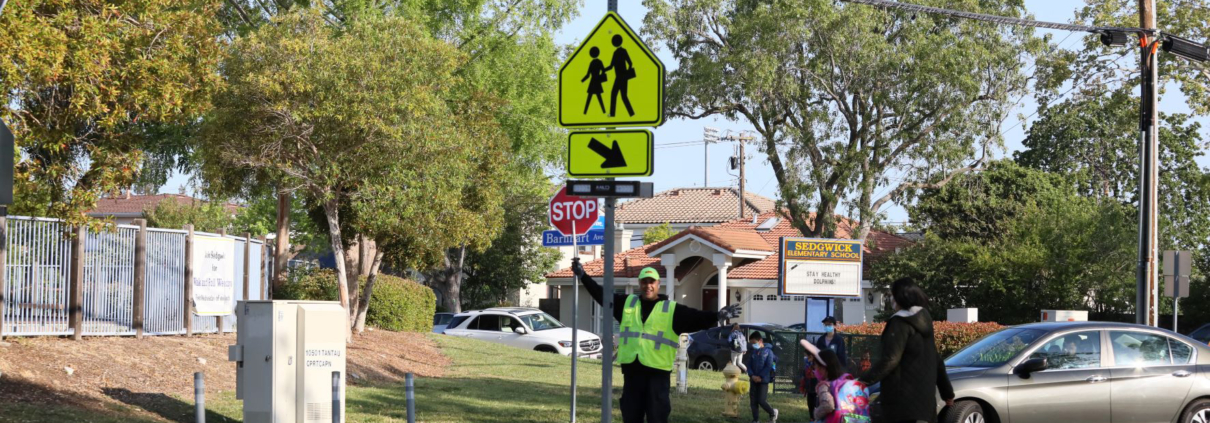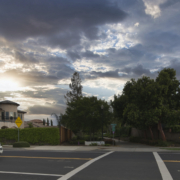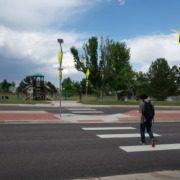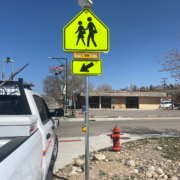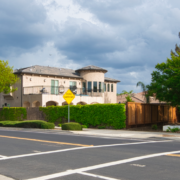Guidelines and Warrant Processes for Rectangular Rapid Flashing Beacons
If you are looking for in-depth info on the guidelines and warrant process for Rectangular Rapid Flashing Beacons, then you’re in the right place.
Here at Availed Technologies, we pride ourselves on being specialists with Solar RRFBs. In today’s article, we explore the guidelines, warrant system, and design process for when and where to use RRFBs at uncontrolled marked crosswalks. Both FHWA and TAC have developed design criteria tools to assist traffic professionals in determining which treatment or treatments should be used for a given crosswalk.
Let’s dive in:
The FHWA Field Guide for Selecting Countermeasures at Uncontrolled Pedestrian Crossing Locations
Let’s look first at the FHWA Field Guide for Selecting Countermeasures at Uncontrolled Pedestrian Crossing Locations.
The first step in the guide is to collect an inventory of the roadway conditions, namely the speed limit, total vehicles per day, travel lane configuration, and approximate total pedestrians per hour (PPH) crossing the roadway. Other pedestrian safety issues are to be recorded such as noted pedestrian conflicts, excessive vehicle speed, inadequate conspicuity and visibility, drivers not yielding, and insufficient separation between pedestrians and traffic.
The roadway conditions inventory is then used with Table 1 to determine which of the following Pedestrian Crash Countermeasures should be considered for the location. The Table has rows for the Roadway Configuration (number of lanes, median islands) and columns for the posted speed limit and AADT (Annual Average Daily Traffic).
Pedestrian Crash Countermeasures
A subset of these guidelines involves pedestrian crash countermeasures. These are listed as:
- High-visibility crosswalk markings, parking restrictions on crosswalk approach, adequate nighttime lighting levels, and crossing warning signs
- Raised crosswalk
- Advance Yield Here To (Stop Here For) Pedestrians sign and yield (stop) line
- In-Street Pedestrian Crossing sign
- Curb extension
- Pedestrian refuge island
- Rectangular Rapid-Flashing Beacon (RRFB, which hold particular importance due to their effectiveness)
- Road Diet
- Pedestrian Hybrid Beacon (PHB)
Now that we’ve covered them, let’s turn our overview over to the Transportation Association of Canada (TAC) Pedestrian Crossing Control Guide.
TAC Pedestrian Crossing Control Guide
Similar to the FHWA Pedestrian Crash Countermeasures, the TAC Pedestrian Crossing Control Guide includes a Treatment Selection Matrix where vehicle volume, speed limit, and total number of lanes are the primary variables used to determine which of the following crossing treatment options should be considered.
These crosswalk treatment options encompass the following tools:
- Crosswalk with side mounted signs (GM)
- Enhanced crosswalk with side-mounted signs (GM+) which includes advance yield lines, curb extensions, raised pedestrian refuge, and in-street signs
- Rectangular Rapid Flashing Beacon
- Overhead Flashing Beacon
- Traffic Signal
In our opinion, the current third version of the TAC Pedestrian Crossing Control Guide from 2018 is somewhat outdated, in that RRFBs are now commonly used in overhead applications and should be considered instead of overhead flashing beacons. RRFBs have been demonstrated to be significantly more effective than traditional round flashing beacons.
The TAC Pedestrian Crossing Control Guide also includes a flow chart intended to be used as a preliminary decision support tool. The tool includes Average Hourly Pedestrian Volume as a criteria, and includes a weighting system where pedestrian volume is converted to Equivalent Adult Units (EAU) to account for pedestrian age and physical ability or at-risk pedestrians.
Key Takeaways Regarding Guidelines and Warrant Processes for Uncontrolled Marked Crosswalks
According to the FHWA Countermeasure Tech Sheet, the average cost of an RRFB system is USD $22,250, with a range of $4,500 to $52,000 each.
Systems like the Availed AV-400 RRFB that are highly efficient have a much smaller form factor than previous technology, and the smaller size greatly reduces the installed cost in the following ways:
- Has lower material costs compared to larger, less efficient systems
- Is lightweight and easy to handle, thereby significantly reducing installation time
- Can be easily pre-installed on the pole prior to being on site
- Can be readily mounted onto existing sign posts. This is perhaps the greatest opportunity to minimize the installed cost, as the existing sign post footings can often be used which eliminates any expensive work involving the pole foundations. Regular sign posts are also significantly less costly than the larger poles that are necessary to support larger, less efficient solar RRFBs.
By utilizing existing sign posts, an agency can install three-to-five RRFB systems for the USD $22,250 average cost noted in the 2018 FHWA Tech Sheet.
Another factor that is implicit in the crosswalk treatment decision process is the concern with the overuse of crosswalk treatments. The argument is that crosswalks and sign treatments should be used discriminately so that the effectiveness of these treatments is not deteriorated by overuse. The concern for overuse of traffic signs is fundamental in the FHWA MUTCD, as noted in Section 2A.04 Excessive Use of Signs.
We here at Availed Technologies argue that the ‘Active’ nature of an RRFB makes the device largely immune to the risk of overuse. An RRFB system that is not flashing will not contribute to any deterioration of effectiveness in the same way that prolific use of enhanced signs or pavement marking will. To this end, a requirement for a minimum number of pedestrians per hour arguably does not apply to RRFBs in the context of overuse.
Many agencies have developed their own decision process for prioritizing and selecting improvements for uncontrolled marked crosswalks. In many places, RRFBs have become a key tool that is used, owing to their high effectiveness, relatively low cost, and advantages of being an Active device that is not prone to overuse in the same way as passive treatments are.
Considering using RRFBs in an upcoming project?
Our expert team is here to answer all your questions. Contact us today.

